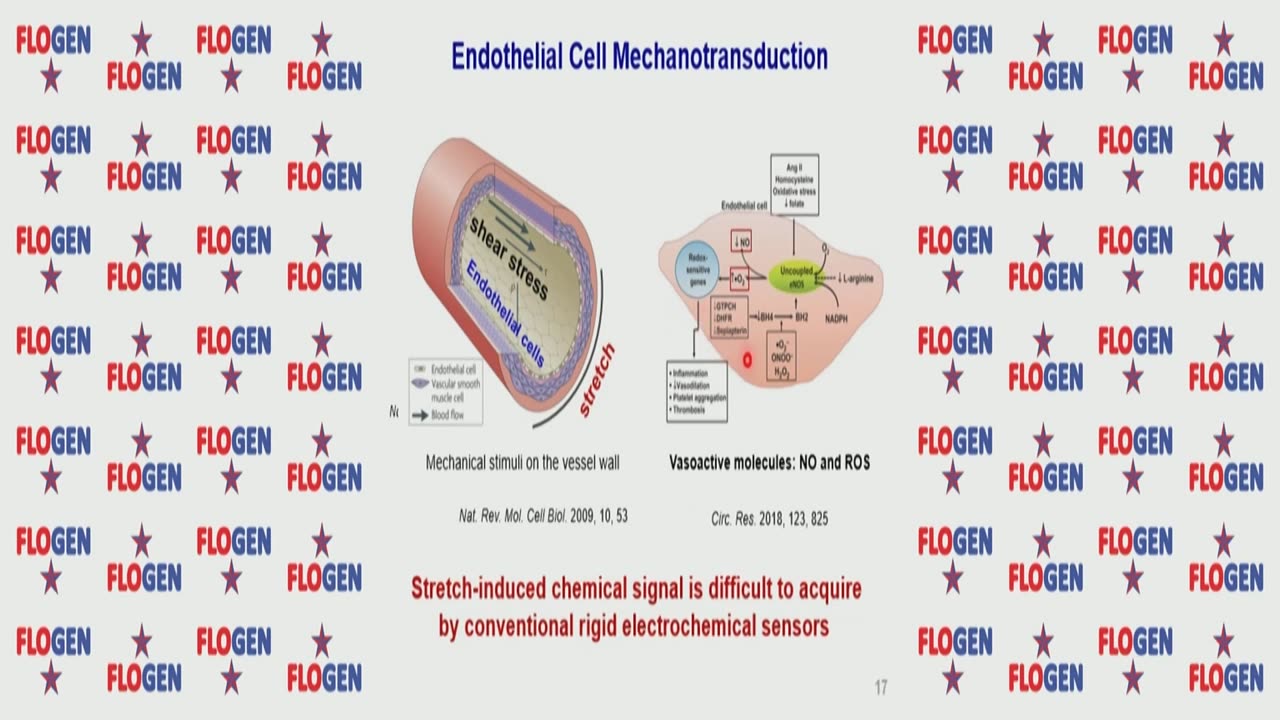Premium Only Content

Prof. Wei hua Huang @ FLOGEN SIPS 2022 Yoshikawa Intl. Symposium on Oxidative Stress
FLOGEN SIPS 2022: Yoshikawa International Symposium on Oxidative Stress for Sustainable Development of Human Beings (2nd international Symposium)
Presenter:
Prof. Wei hua Huang, Wuhan University, Wuhan, China
Title:
Stretchable Electrochemical Sensor for Real Time Monitoring of ROS/RNS Signaling and Oxidative Stress in Mechanotransduction
Abstract
Cells in the body reside in dynamic mechanical milieus and can sense mechanical forces and then translate them into biochemical signals via mechanotransduction. Reactive oxygen/nitrogen species (ROS/RNS) are closely involved in cellular oxidative stress and physiopathological states, and real-time acquiring the information of ROS and RNS signaling during cell mechanotransduction is vitally important to reveal their complicated roles. Owing to rapid response and excellent sensitivity, electrochemical sensing has been extensively used for tracking ROS/RNS signaling in living cells. However, conventional electrochemical sensors are rigid and fail to comply with the shape changes of soft cells, and this greatly limits the accurate measurement of ROS/RNS signaling during cell mechanotransduction. To this end, we have designed a series of stretchable electrodes based on gold nanotubes, carbon nanotubes and conductive polymer nanofibers [1,2]. These sensors possess good electrochemical stability against mechanical deformations and can be easily deformed to achieve the dynamic stretching of cells. Further, we have also introduced high-performance catalysts (e.g, platinum nanoparticles and biomimetic catalysts) to confer the stretchable sensing interfaces with prominent electrocatalytic property toward ROS and RNS [3]. Based on these stretchable electrochemical sensors, we have successively achieved the real-time monitoring of stretch-induced NO and H2O2 molecules [3,4], and the simultaneous monitoring of them by a single device during endothelial mechanotransduction [5]. Besides, the developed stretchable electrochemical sensors have been also employed to explore the ROS and RNS signaling during mechanotransduction of chondrocytes and lung cells, which demonstrate excessive or acute mechanical loading can evoke severe oxidative stress [2]. These researches present efficient platforms to evaluate the oxidative stress level in dynamic mechanotransduction, which benefit to the understanding of the role of mechanical cues in cell biology.
References:
[1] Y.L. Liu, Z.H. Jin, Y.H. Liu, X.B. Hu, Y. Qin, J.Q. Xu, C.F. Fan, W.H. Huang. Angew. Chem. Int. Ed. 55 (2016) 4537-4541.
[2] Y.L. Liu, W.H. Huang. Angew. Chem. Int. Ed. 60 (2020) 2757-2767.
[3] W.T. Fan, Y. Qin, X.B. Hu, J. Yan, W.T. Wu, Yan, Y.L. Liu, W.H Huang. Anal. Chem. 92 (2020) 15639-15646.
[4] Y.L. Liu, Y. Qin, Z.H. Jin, X.B. Hu, M.M. Chen, R. Liu, C. Amatore, W.H Huang. Angew. Chem. Int. Ed. 56 (2017) 9454-9458.
[5] W.T. Fan, Y. Zhao, W.T. Wu, Y. Qin, J. Yan, Y.L. Liu, W.H Huang. Anal. Chem. 94 (2022) 7425-7432.
-
 6:02:30
6:02:30
SpartakusLIVE
8 hours agoVerdansk QUADS || #1 MACHINE is BACK taking NO DAYS OFF (until I feel like it)
51.2K -
 3:22:12
3:22:12
Alex Zedra
5 hours agoLIVE! Ready or Not
36.8K2 -
 29:05
29:05
Man in America
16 hours agoDid the Fed Just Admit Gold Will Be Revalued? This Could Change EVERYTHING
40.1K20 -
 45:54
45:54
MattMorseTV
6 hours ago $6.35 earned🔴55 MILLION immigrants are UNDER REVIEW. 🔴
40K44 -
 3:15:07
3:15:07
TheItalianCEO
7 hours agoLast Stream before I go - Playing The Finals
27.2K -
 1:14:43
1:14:43
JustPearlyThings
6 hours agoPearl Reacts: 20 Black Conservatives DESTROY Radical Feminist Activist | Pearl Daily
46.4K20 -
 3:42:27
3:42:27
This is the Ray Gaming
5 hours ago $0.37 earnedThursRAY Night LIVE with the BOYS! | Rumble Premium Creator
16.1K -
 5:34:28
5:34:28
The UC Zone
8 hours ago🔴LIVE - THE UC ZONE - NEW UPDATE TO OFF THE GRID?!?
11K -
 2:09:22
2:09:22
Robert Gouveia
9 hours agoTrump WINS Appeal! 🚨 Letitia James BLOWN OUT! Biden Scandal BOMBSHELL!
39.6K24 -
 3:15:52
3:15:52
Barry Cunningham
9 hours agoBREAKING NEWS: PRESIDENT TRUMP ON PATROL IN WASHINGTON D.C.
63.8K46